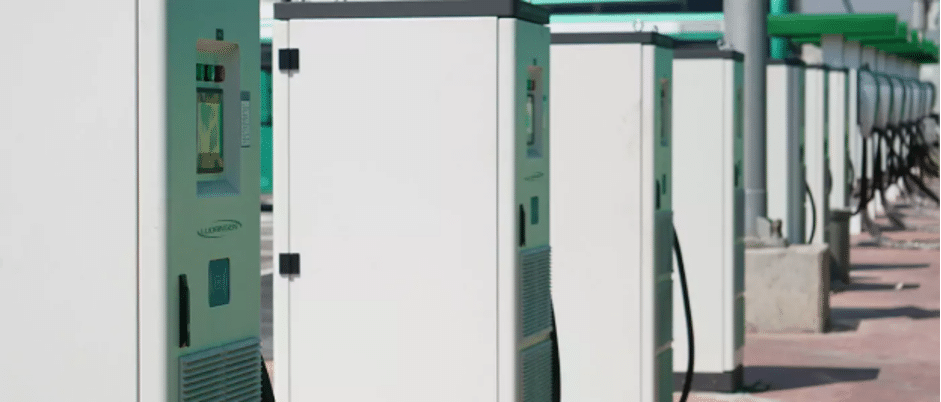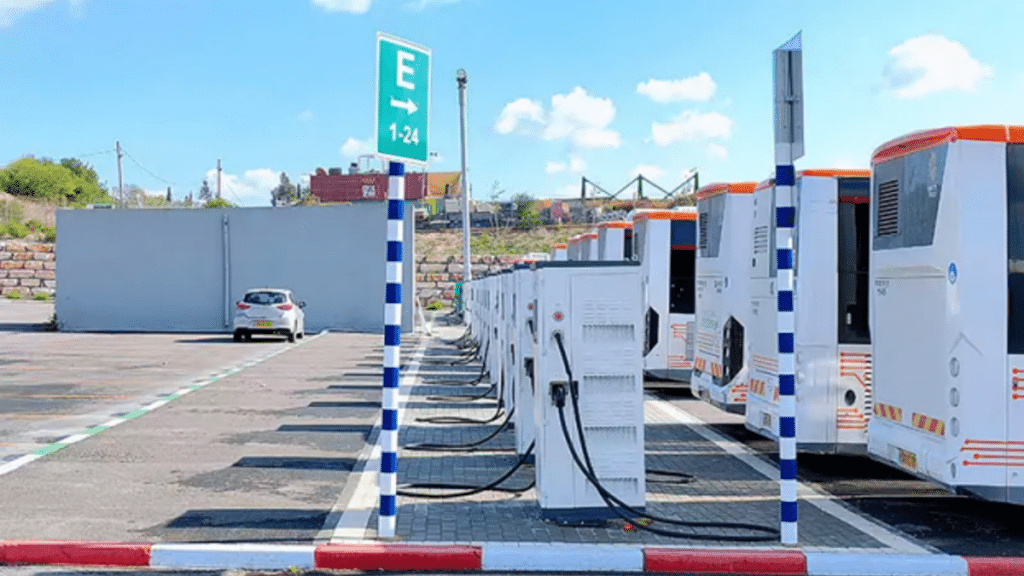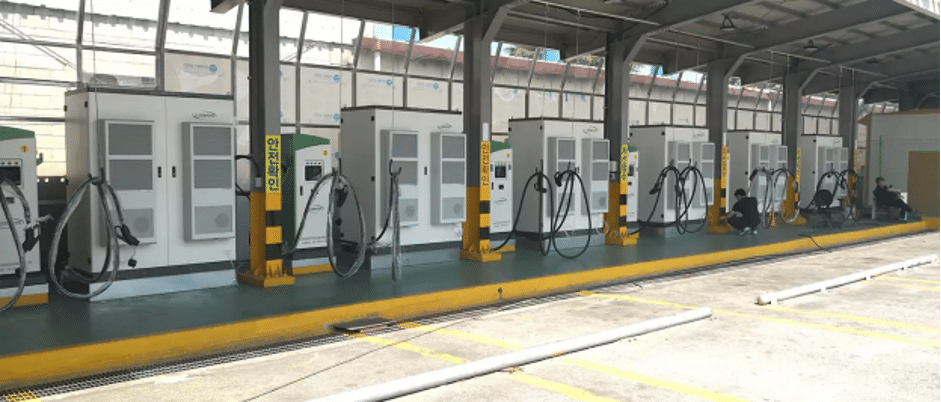Electric vehicles (EVs) are increasingly popular due to their advantages in environmental protection, economy, and driving range. EV adoption not only helps reduce greenhouse gas emissions and improve air quality, but their low maintenance costs and gradually improving range also make them a long-term travel solution worth investing in.
Understanding the charging methods and working principles of electric vehicles is crucial for transitioning to green transportation. This not only involves selecting appropriate EV charging station but also understanding charging efficiency, charging time, and how to maximize battery life. This article will explain “How do electric car chargers work?” in detail. Read on to learn more!
What is EV Charging?
EV charging is the process of converting external electrical energy into electrical energy that is acceptable to the electric vehicle battery and storing it in the battery for driving the motor to operate.
The EV charging system mainly consists of charging sockets, cables, controllers, connectors, and charging stations. These components work together to ensure the safe transfer of electrical power from the power source to the battery.
This straightforward ‘how do EV charging stations work’ process enables EVs to travel emissions-free without relying on gasoline. Charging also provides significant long-term cost savings. It’s because electricity consumed per mile is far cheaper than fuel.
Types of Electric Vehicle Charging
How do electric car chargers work? To understand this process, exploring the types of EV charging is crucial. These types vary in power levels and charging times. They include:
1. Level 1 EV Charging
Level 1 EV charging uses the 120V power outlets found in homes. It offers a power range of 1kW-1.8kW and can increase the range by approximately 3-5 miles per hour.
This charging method is the slowest. However, due to its convenience and low cost, this method can be used for charging overnight or during long-term parking.
2. Level 2 EV Charging
Level 2 EV charging, utilizing the 240V AC power, delivers noticeably faster refueling with an AC EV charger. The power of AC chargers is usually between 3.7kW-22kW, and it takes 4 to 6 hours to fully charge, depending on the efficiency of the vehicle and charger.
This charging method is suitable for commercial and workplace charging, providing moderate charging speed.
3. Level 3 EV Charging
Also called DC fast charging, Level 3 EV charging boosts EV charging power by using direct current. It can add over 80% battery charge within just tens of minutes.
This makes Level 3 chargers ideal for rest stops and public charging points. Some high-powered fast charging stations can handle DC power levels as high as 600kW, maximizing driving range during brief charging intervals.

How Do Electric Car Charging Stations Work?
How do EV chargers work? EV charging stations perform complex functions to deliver power to vehicles safely and efficiently. The EV charging process generally follows five key steps:
1. Connect the Power Supply
Firstly, the user connects the vehicle charging port and charging station through a charging cable. Electric vehicles will lock the charging gun during this process to prevent accidental disconnection. Therefore, pay attention to ending the charging process before disconnecting the power supply.
2. Power Input and Conversion
Next, AC power is input from the grid through AC charging stations, and then converted into DC power through the onboard charger in the vehicle. This process is relatively slow because all power conversion is completed inside the vehicle.
DC charging stations directly provide DC power to EVs because they have built-in power converters that can provide higher power, resulting in faster charging speeds.
3. Battery Management System (BMS) Communication
The battery management system can monitor the status of the charging battery, including battery level, temperature, and voltage.
During the charging process, BMS communicates with the charger to ensure a safe charging process. BMS will also adjust the charging strategy based on the battery state to prevent or reduce the impact on the battery.
4. Charging Control and Monitoring
During the charging process, the car charger will monitor current, voltage, and temperature in real time. Once malfunctions or abnormal situations occur, the charging station will immediately interrupt the charging process.
In addition, the car chargers are usually equipped with user interfaces that allow users to start charging, monitor charging status, and stop charging. Some smart charging stations also allow users to remotely control the charging process and provide functions such as setting charging time.
5. Charging Completion
After EV charging is completed, the car charger will automatically cut off the power to prevent overcharging. Users can obtain information such as electricity consumption and cost through mobile applications or the display screen of charging stations. These are the whole process of “How do electric car chargers work?”
Buy Reliable AC and DC Chargers
Luobinsen is a seasoned manufacturer of EV charging equipment. Their products have been exported to 80+ countries, with 20000+ DC chargers on service all over the world.
They offer high-quality AC and DC chargers. Top DC charging station series include the All-in-One DC Charger, capable of delivering 120kW-300kW charging power, Group Chargers suitable for fleet vehicles, and Super High Power Chargers achieving charging speeds up to 600kW.
AC chargers include Mode2 AC Portable Chargers that support flexible use at home or in an outdoor environment. Some key advantages of Luobinsen EV chargers include:
- Wide power options from 7kW to 600kW.
- User-friendly touchscreen for intuitive use.
- Supports various charging connectors, such as CCS1, CCS2, GBT, and CHAdeMO.
- The remote control allows efficient over-the-air firmware and software updates.
- The high IP rating ensures safety in indoor and outdoor environments.
- Comprehensive safety functions such as overcurrent, overtemperature, and surge protection.
- Suitability for installation at private homes, workplaces, retail sites, and more.
 Conclusion
Conclusion
Understanding the basics of “how do electric car chargers work” will help drivers make appropriate choices when selecting charging facilities and operate correctly during the charging process. Whether at home, work, or on long trips, reliable EV charging solutions from brands like Luobinsen can address all needs.
As charging technology continues to advance, EVs will become even more practical and affordable transportation solutions. To browse the full range of Luobinsen AC and DC EV chargers and learn more about “how electric car chargers work,” contact them now!


 Conclusion
Conclusion